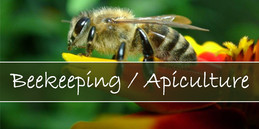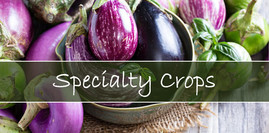
Responsible planting...
Planting should be a fun activity, but also includes managing our natural resources by practicing caution. Plants and seeds for planting pose a significant risk to U.S. agriculture and natural resources because they can carry insect pests and pathogens. Seeds can also be mixed with noxious weed seeds.
Always ensure you are getting seed from a reputable source.
** Contact an Extension Service Agent near you for questions regarding soil, insects, plants, etc. They provide free expert guidance specific to your area. **

AFSIC contains information supporting planting and growing, production practices, and so much more. This month we are highlighting beekeeping (apiculture) and specialty crops.
Read on to find out more...

The USDA-ARS sponsors five Bee Research Labs that "facilitate knowledge transfer of sustainable, bee health management practices to secure continued pollination of our natural and agricultural plant communities." The western honey bee (Apis mellifera; pictured left) has been domesticated for honey production and pollination of the nation’s crops. Learn about bee history, colony collapse disorder (CCD), creating a pollinator-friendly field/garden, and so much more on AFSIC's Beekeeping page.
|

Specialty crops include fruits and vegetables, tree nuts, dried fruits, horticulture, and nursery crops (including floriculture). Eligible plants must be cultivated or managed and used by people for food, medicinal purposes, and/or aesthetic gratification to be considered specialty crops. Ethnic crops, heirloom varieties, and many crops used to create non-food products are also included.
|

It's never too early to start teaching kids about agriculture and science! Review instructional books, teaching aids, course outlines, support organizations and other teaching resources for all levels - kindergarten, high school and beyond on AFSIC's Classroom and Curricula page.

Headlines and Events:
Alternative Farming Systems Information Center
The National Agricultural Library’s Alternative Farming Systems Information Center (AFSIC) specializes in resourcing data, research, training, and other tools pertinent to establishing and maintaining alternative cropping systems and/or sustainable agricultural production across a variety of plant and animal species. AFSIC includes information on production practices, marketing, local and community food systems, and environmental justice in support of the USDA's effort to ensure a sustainable future for agriculture and farmers worldwide.
Email the AFSIC team: afsic@ars.usda
|